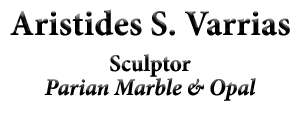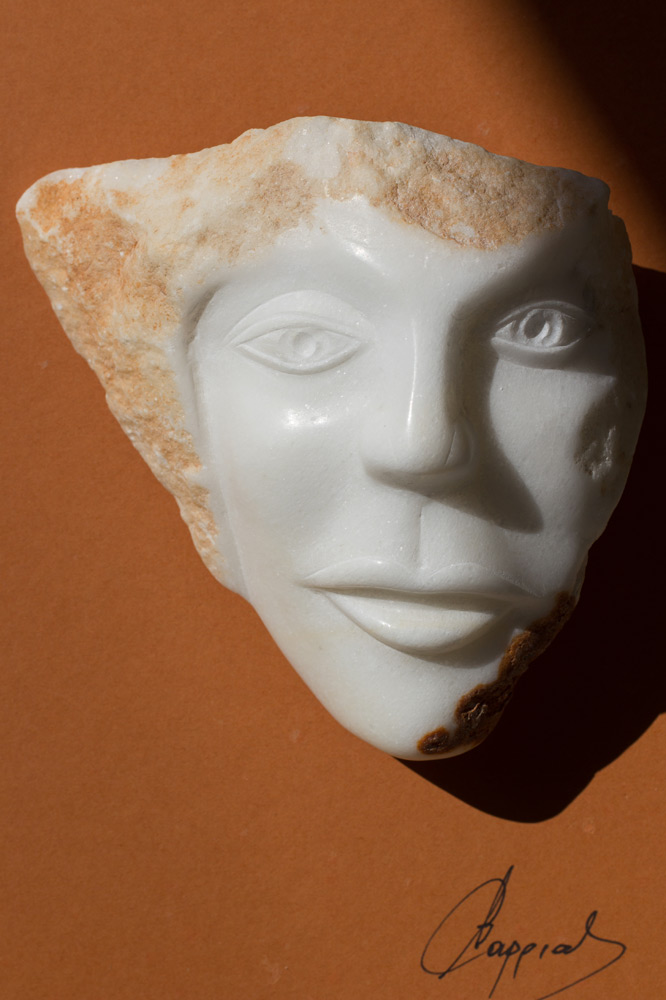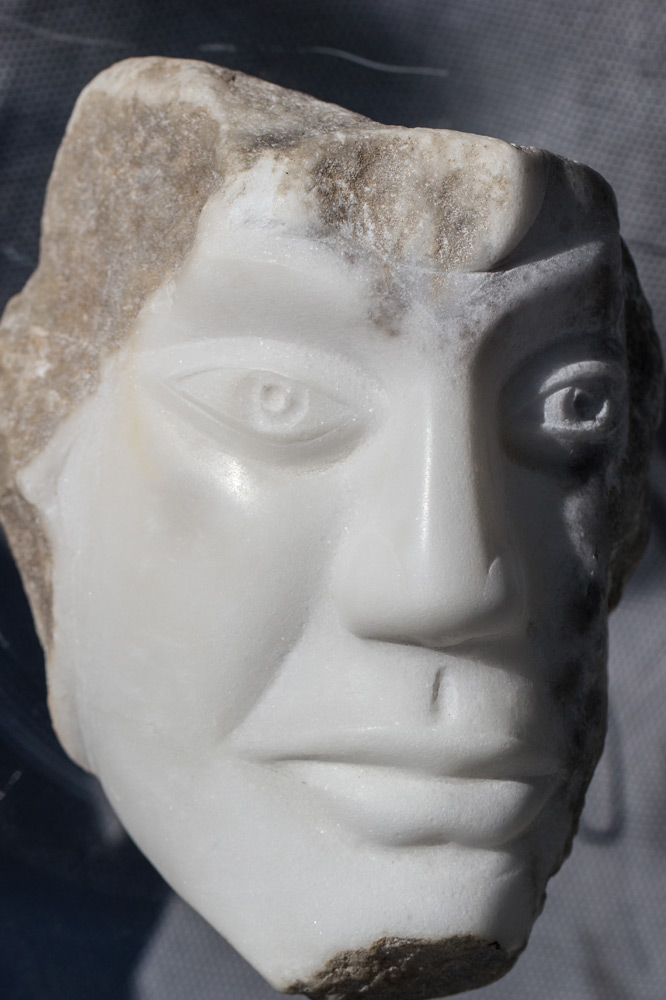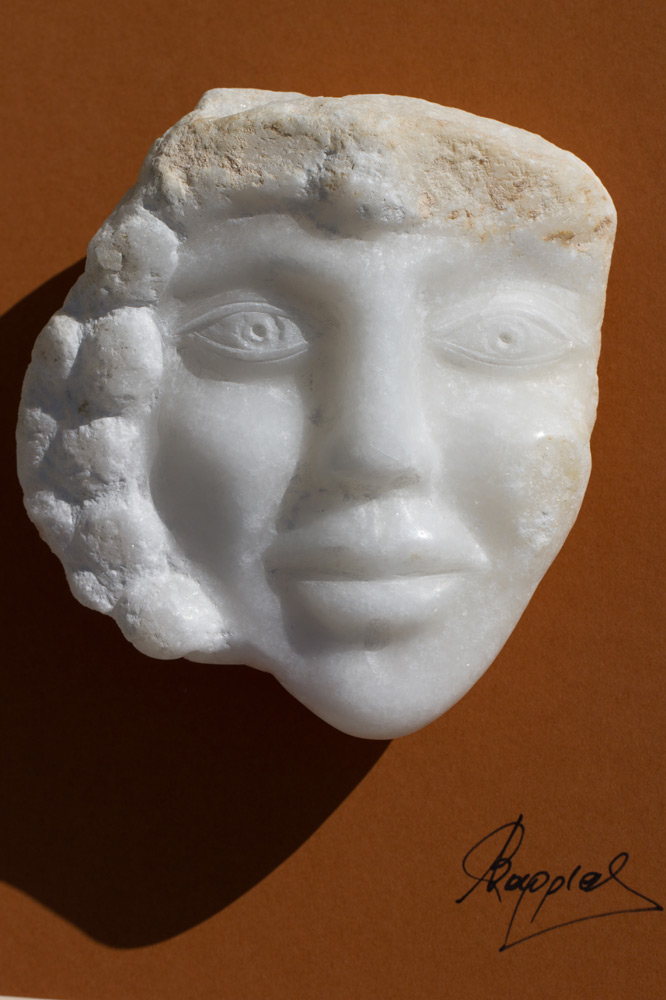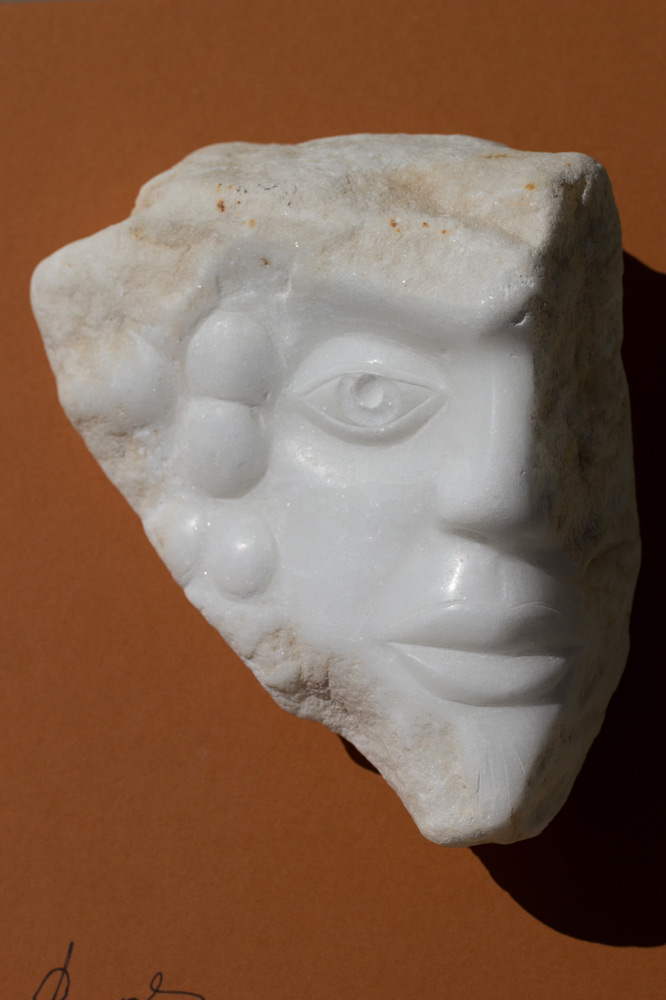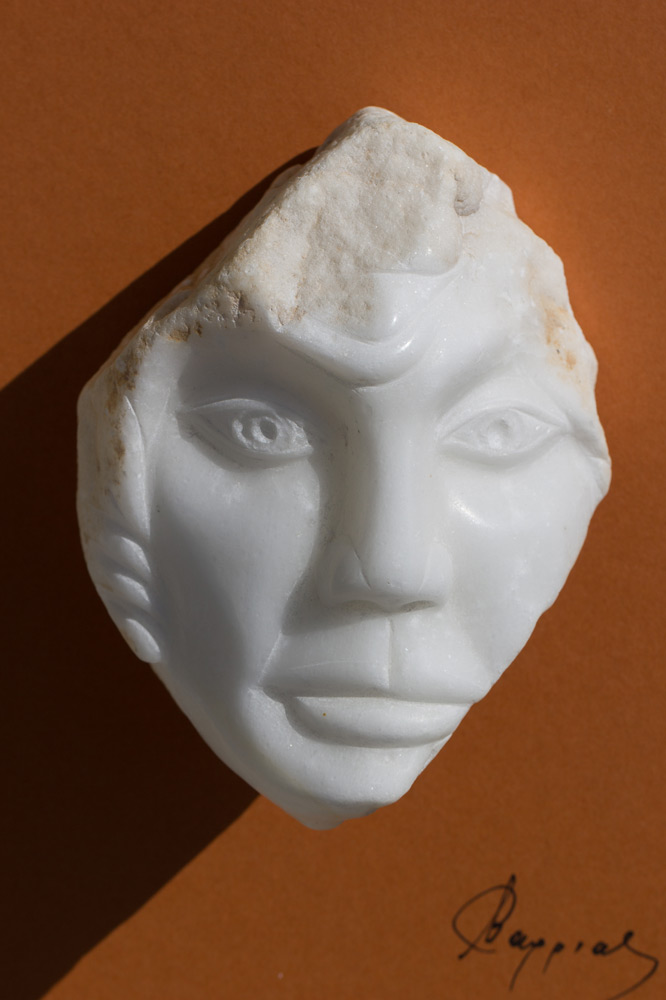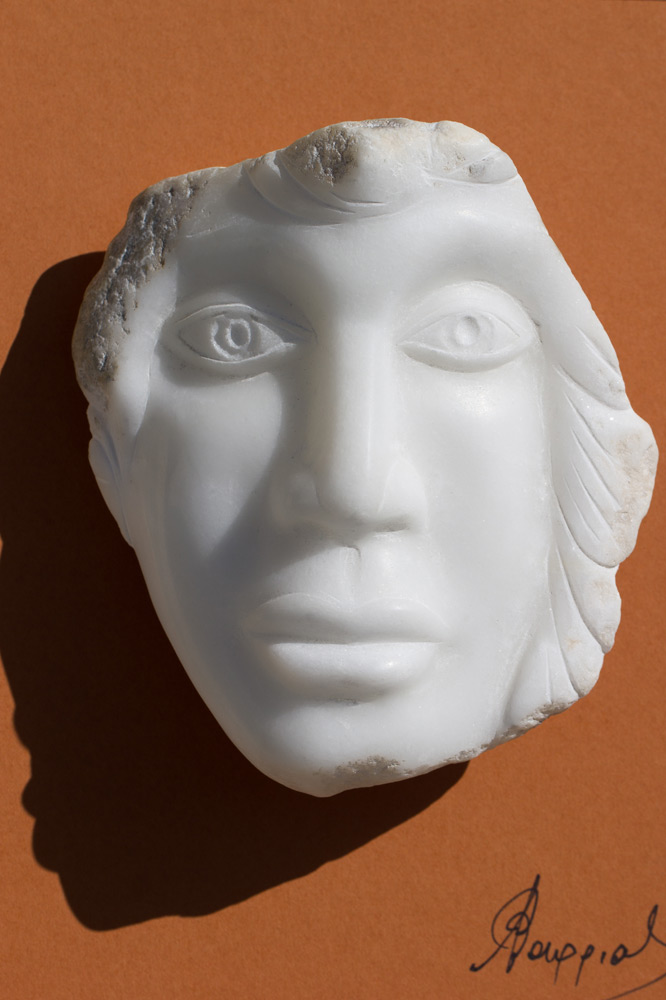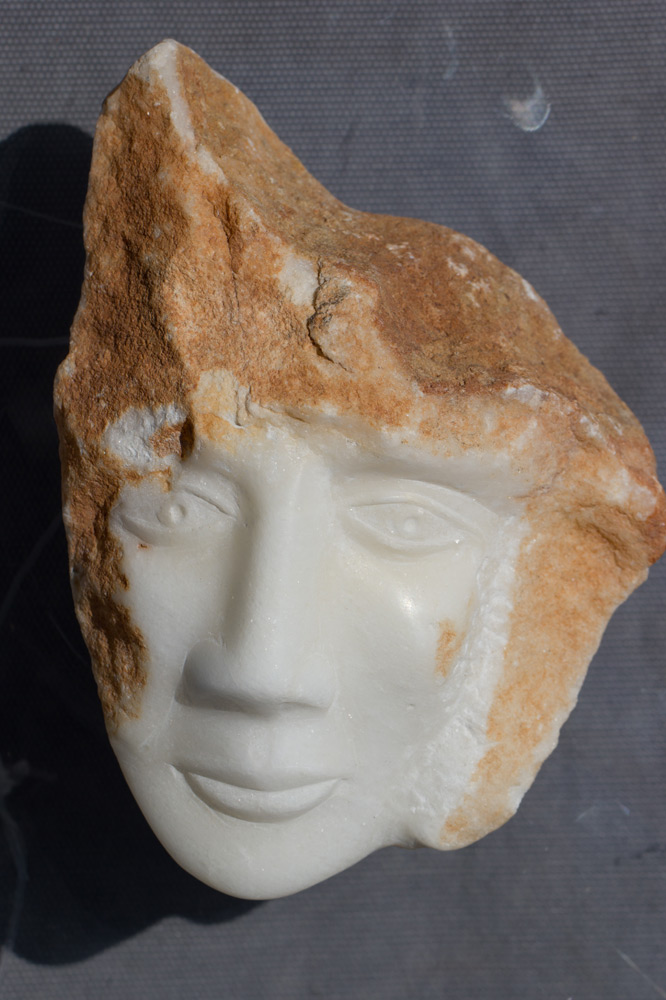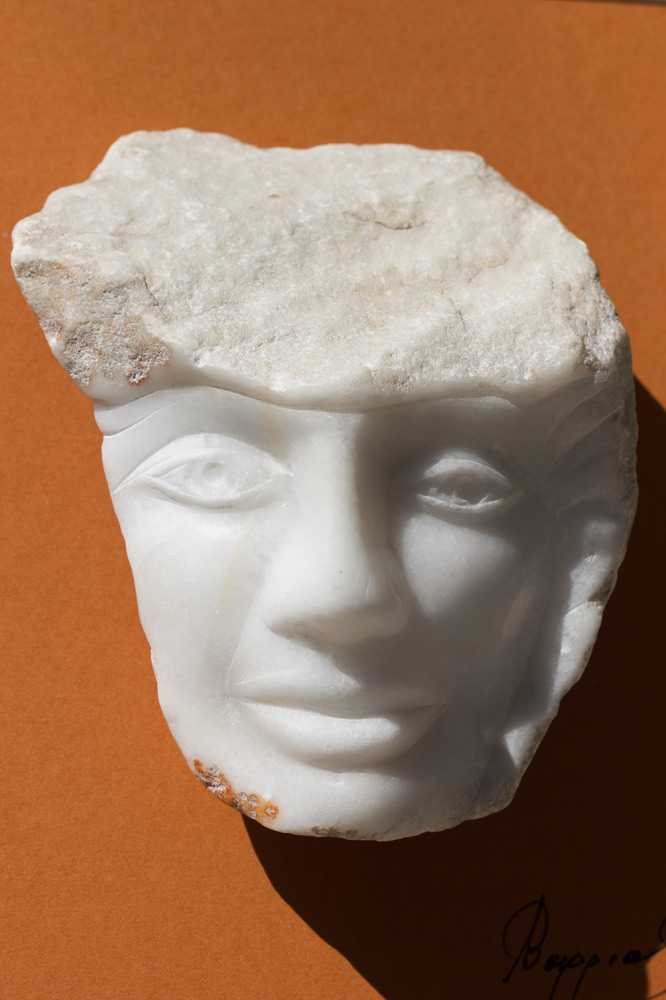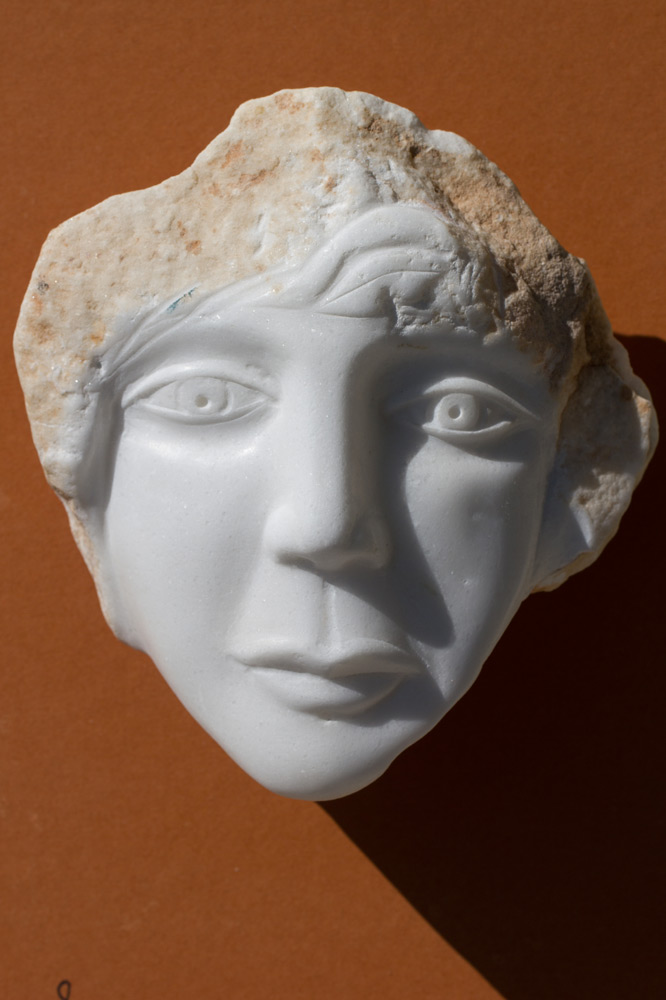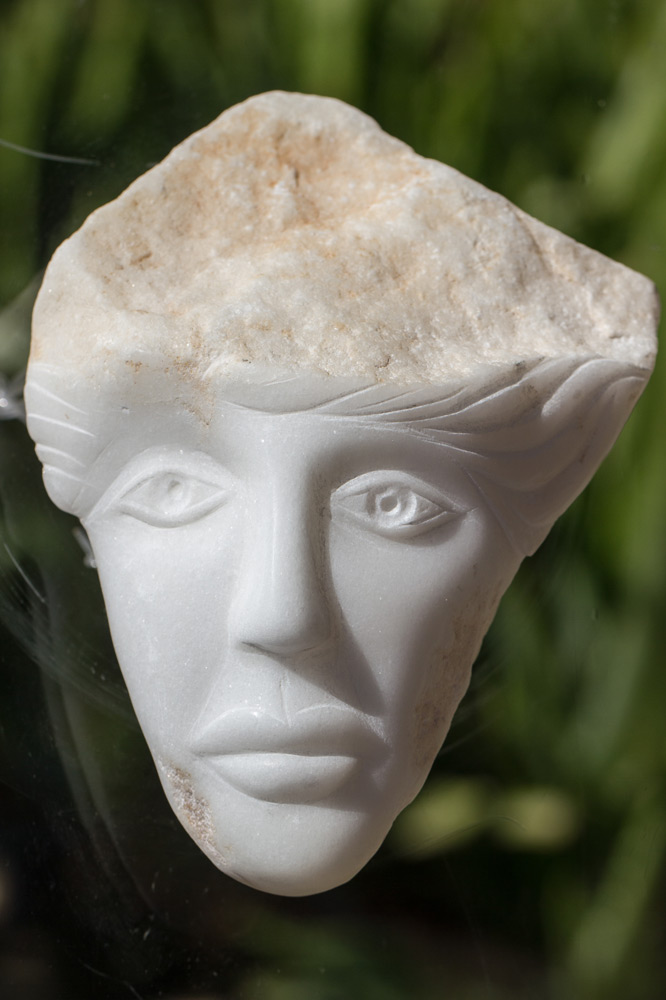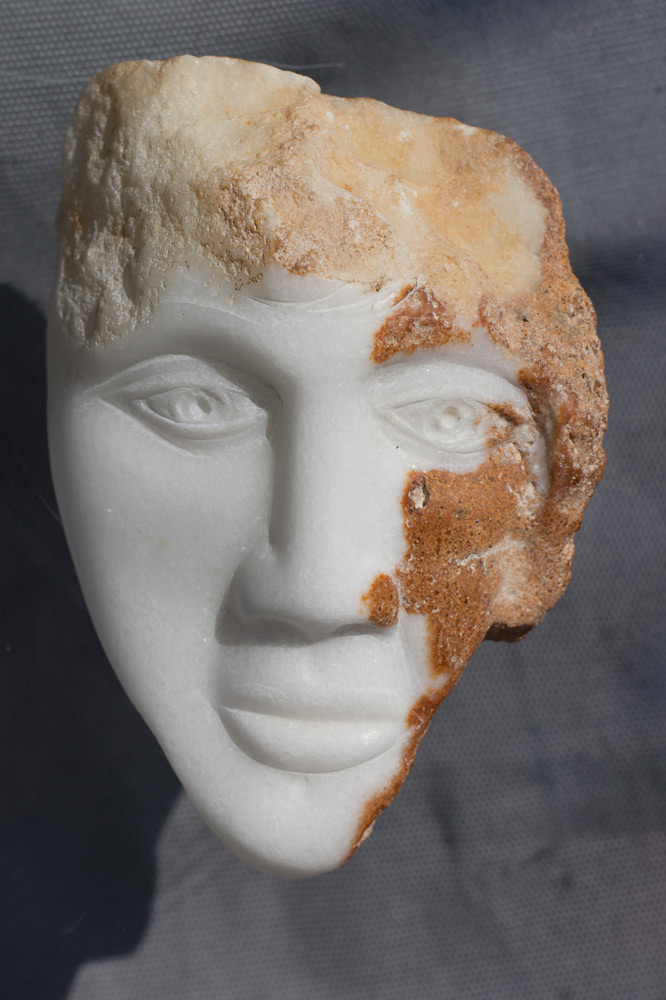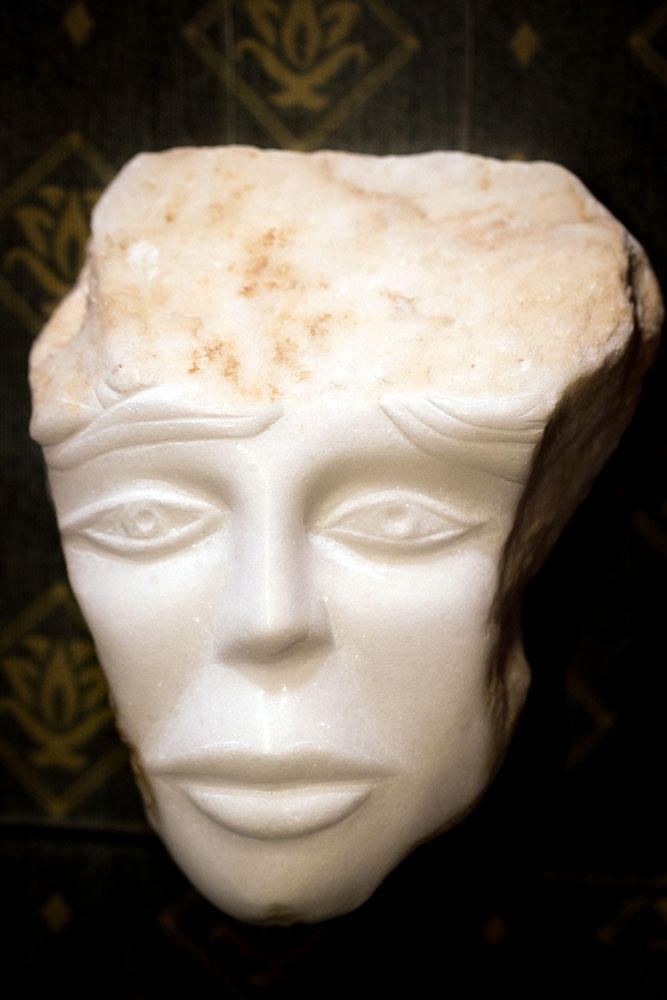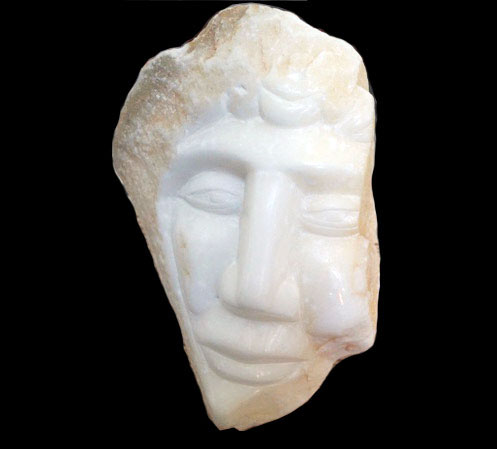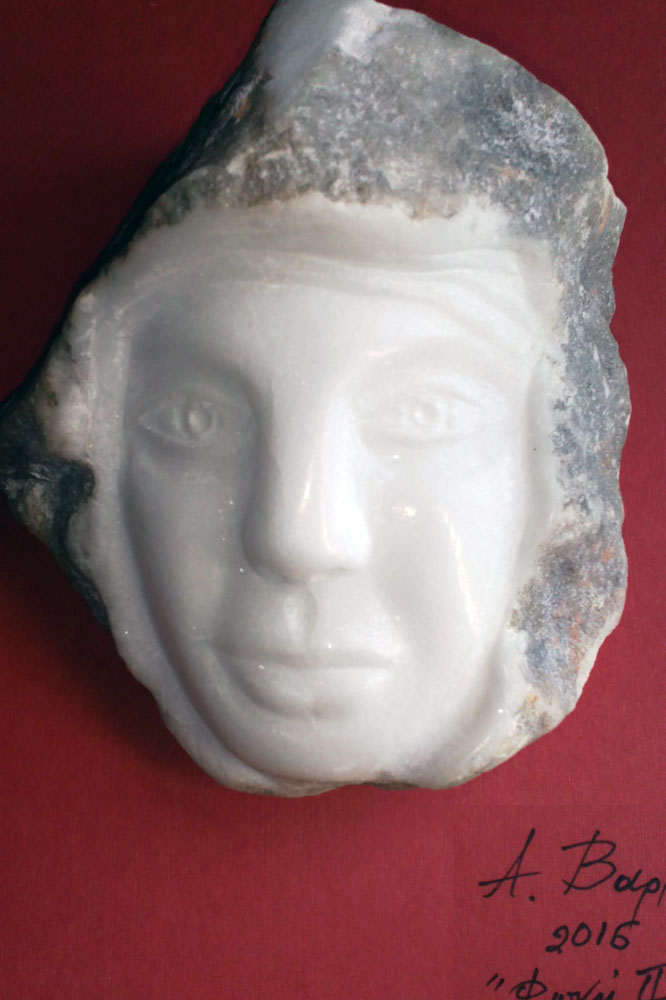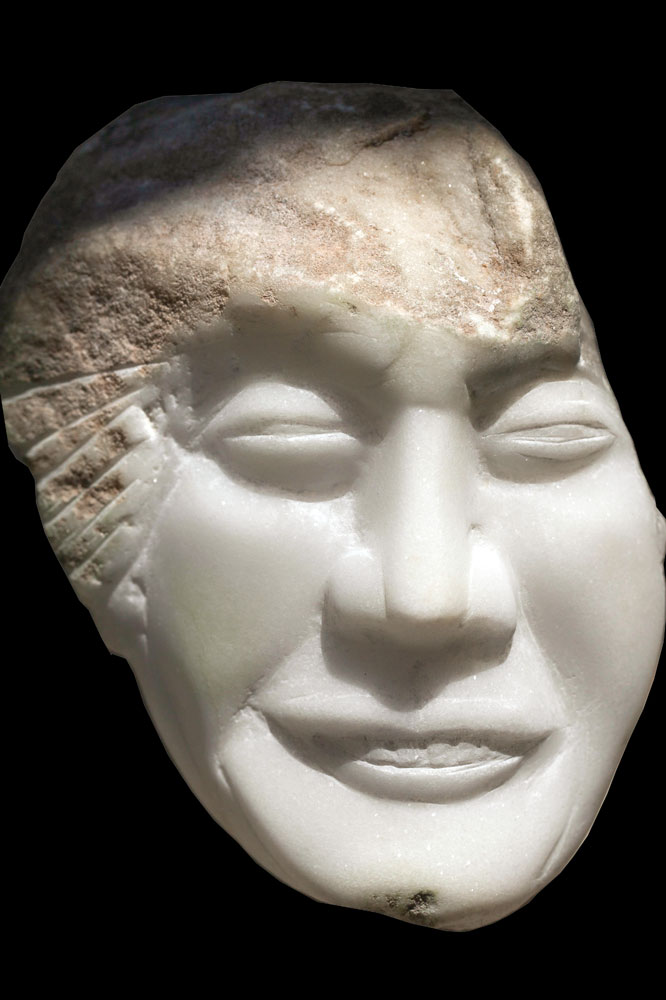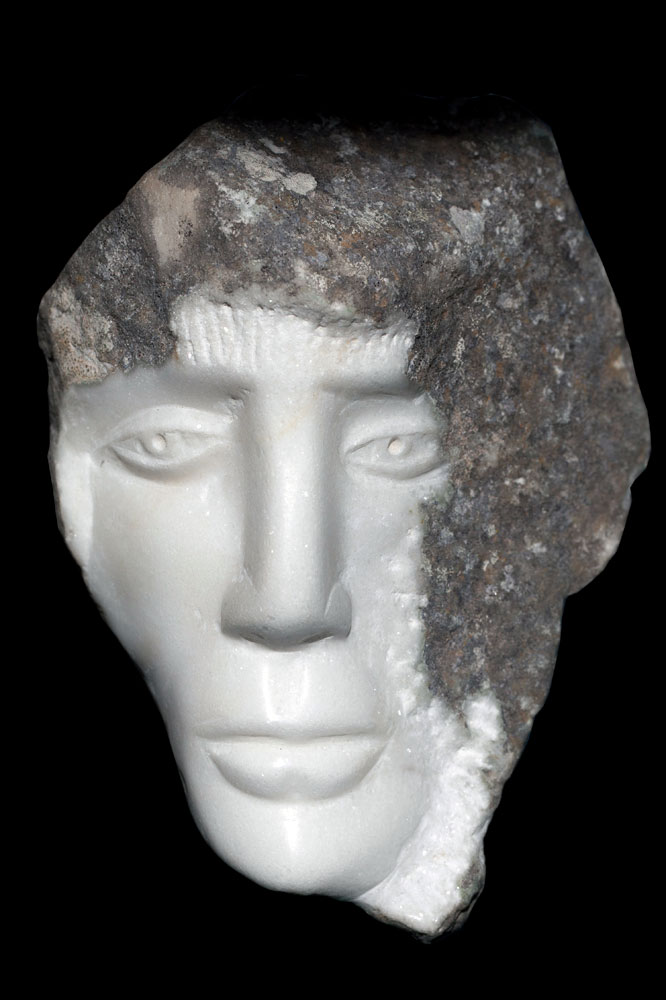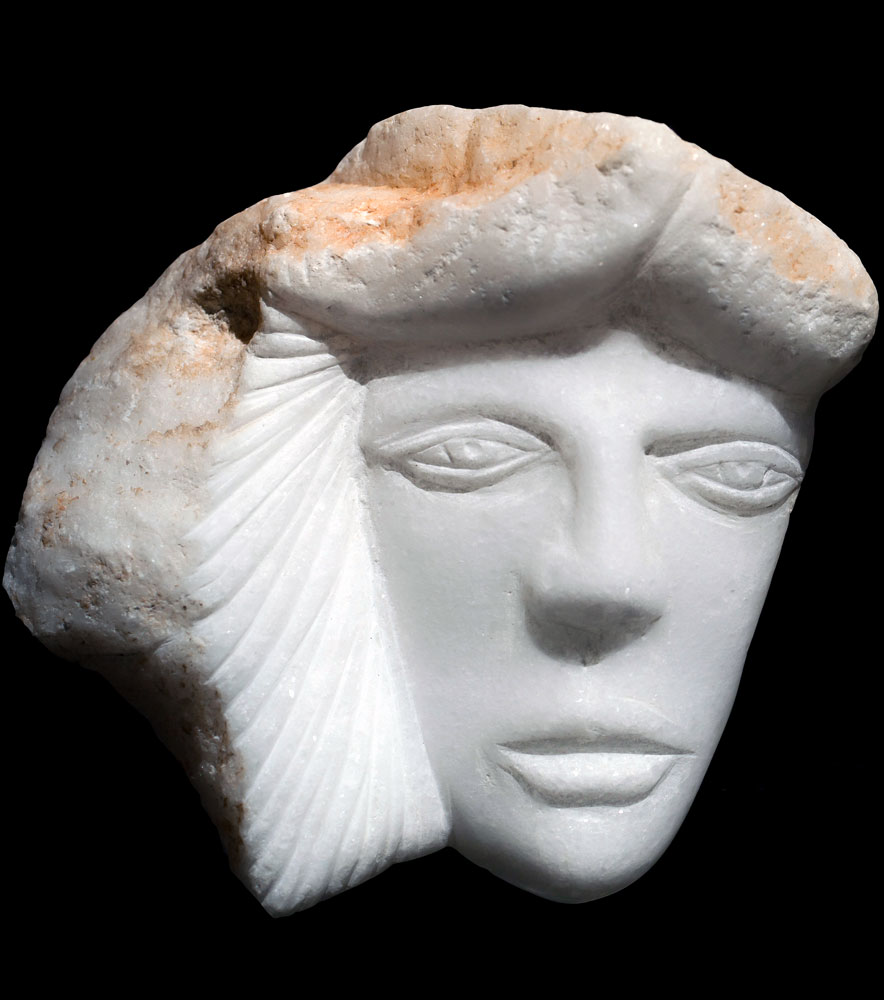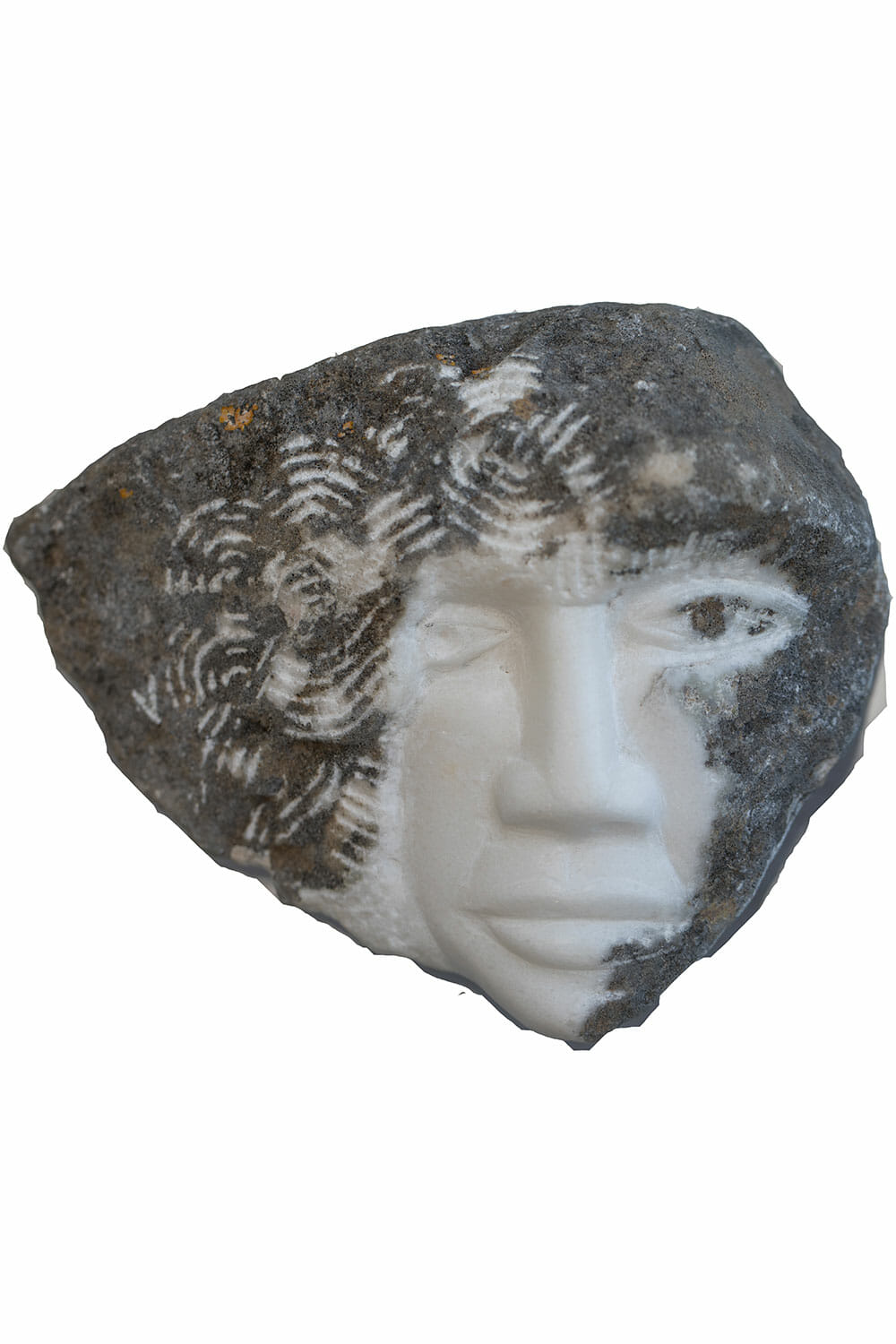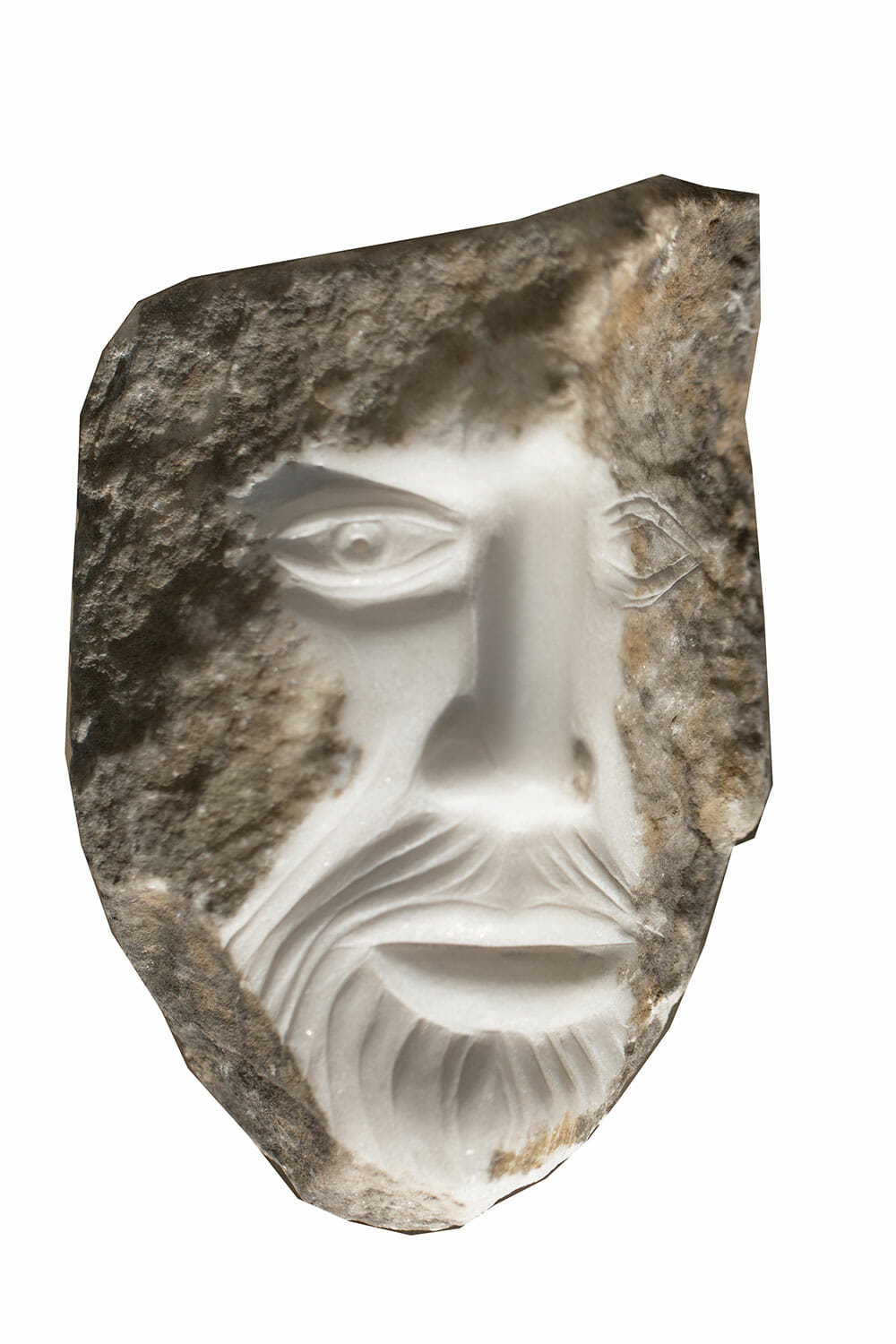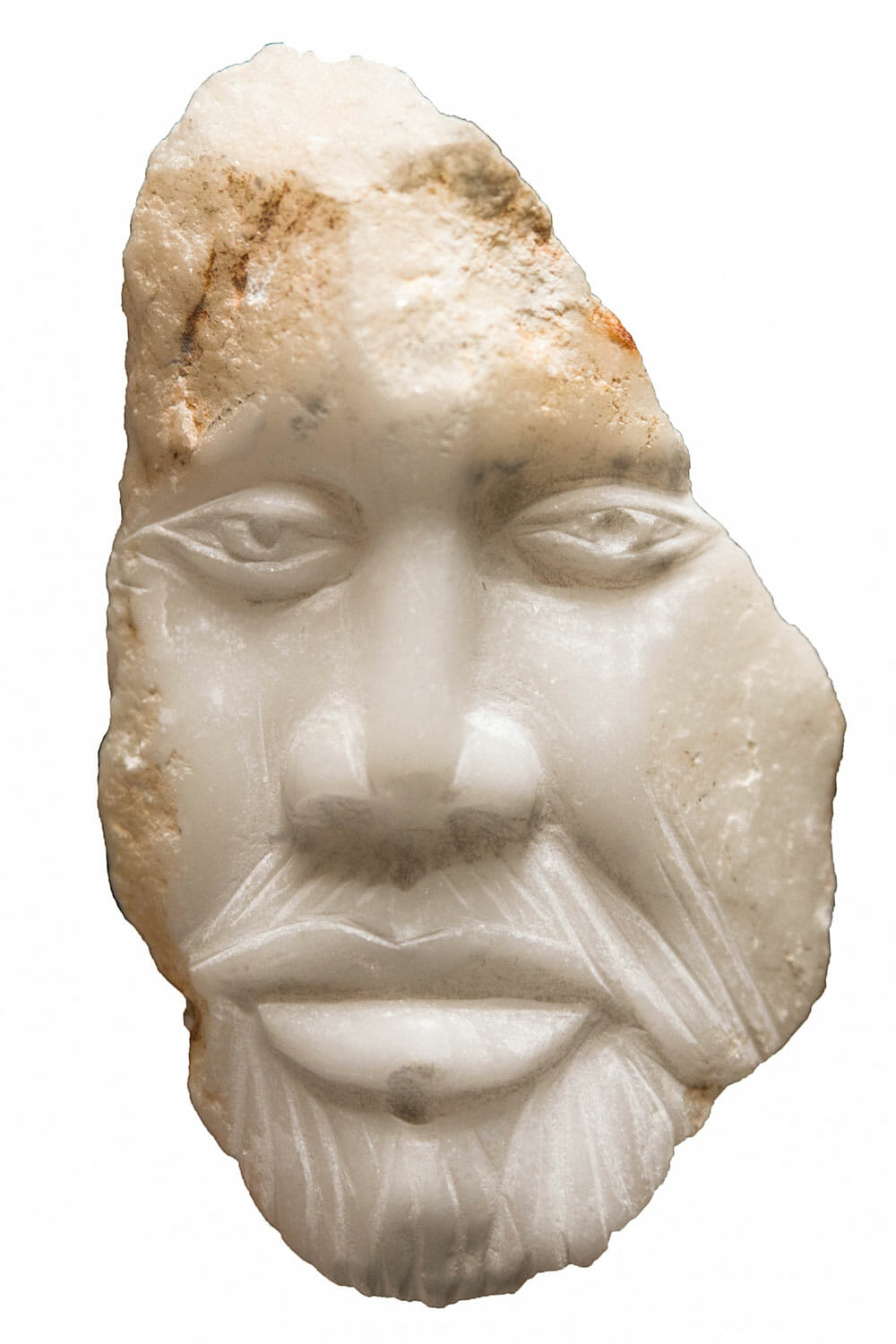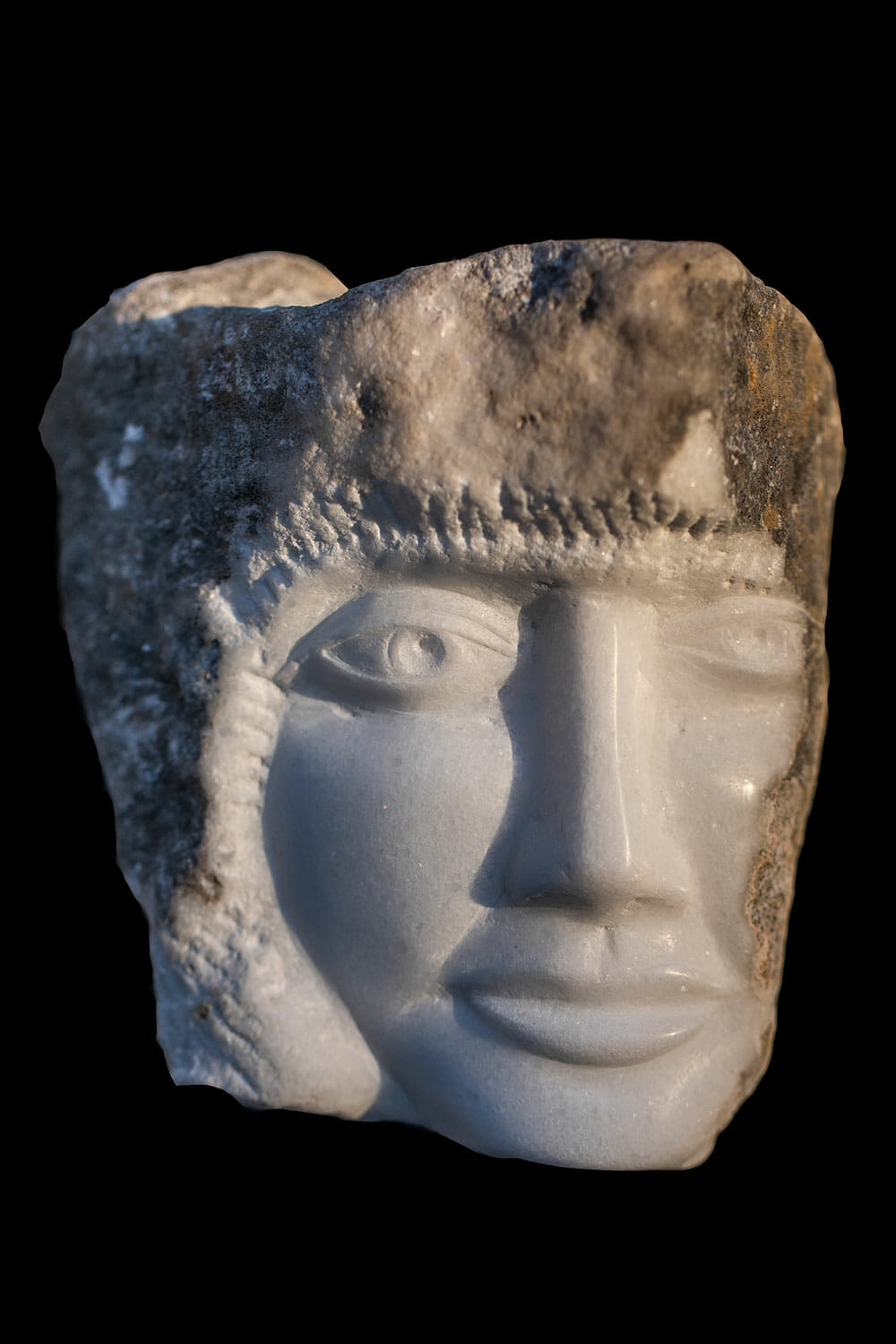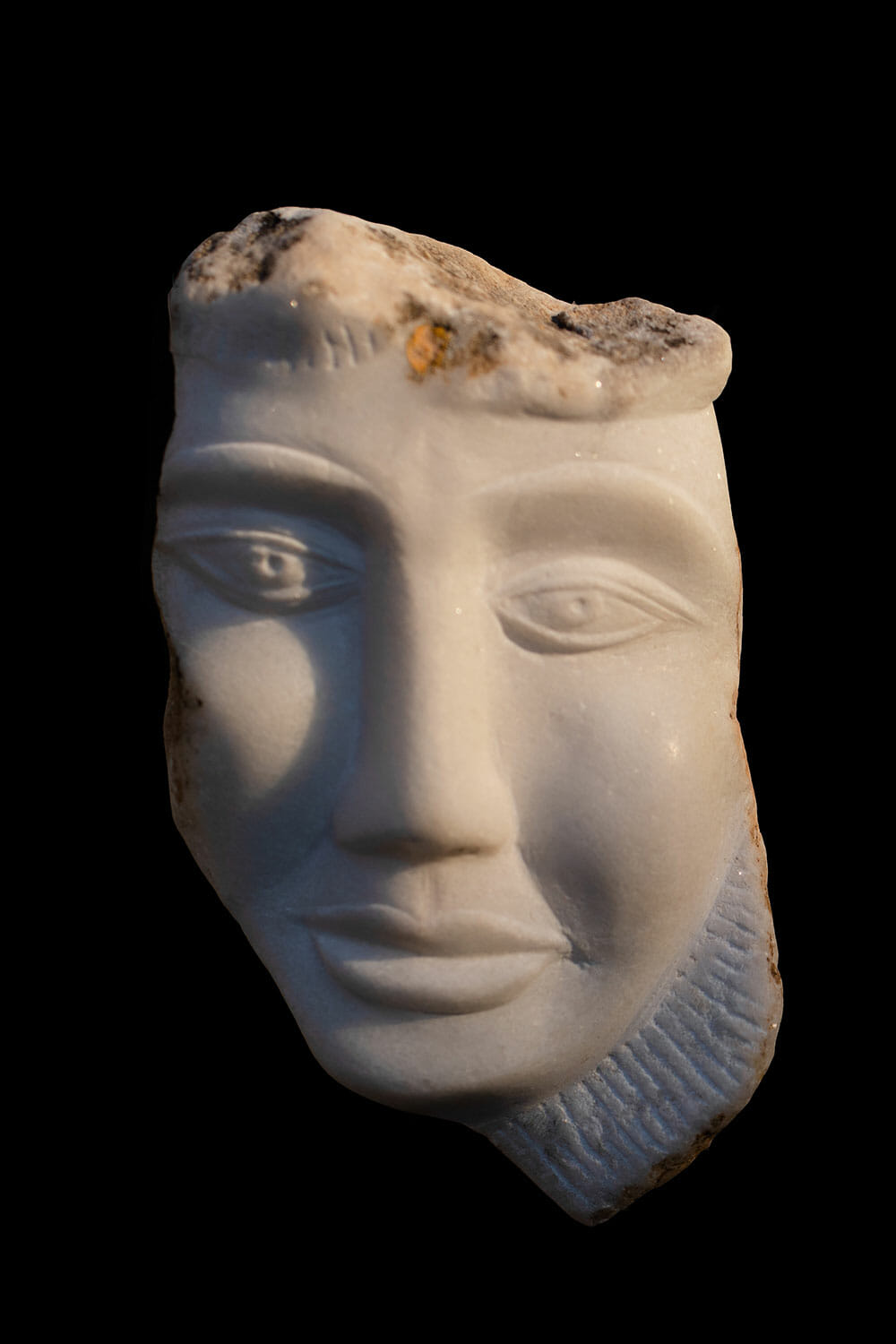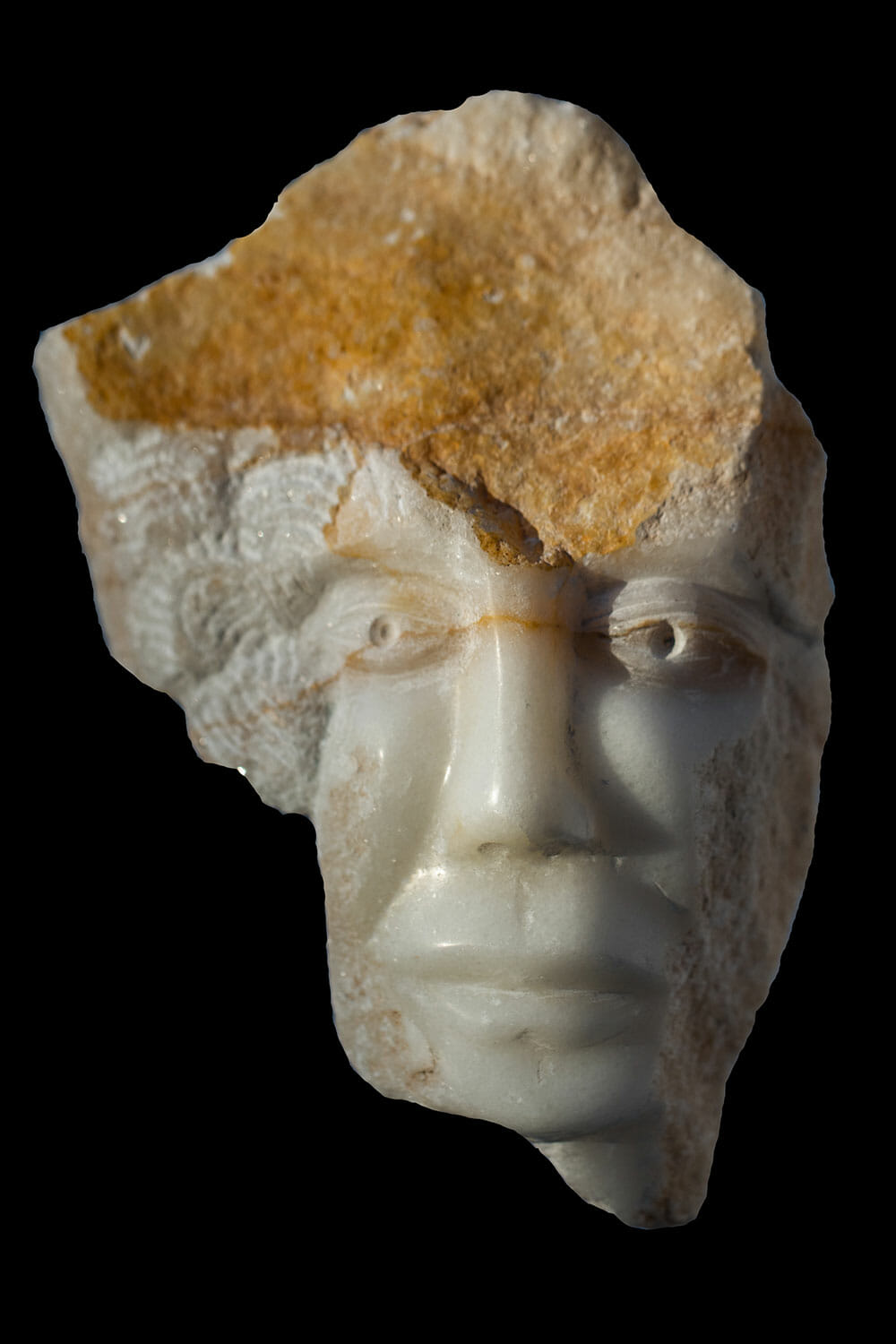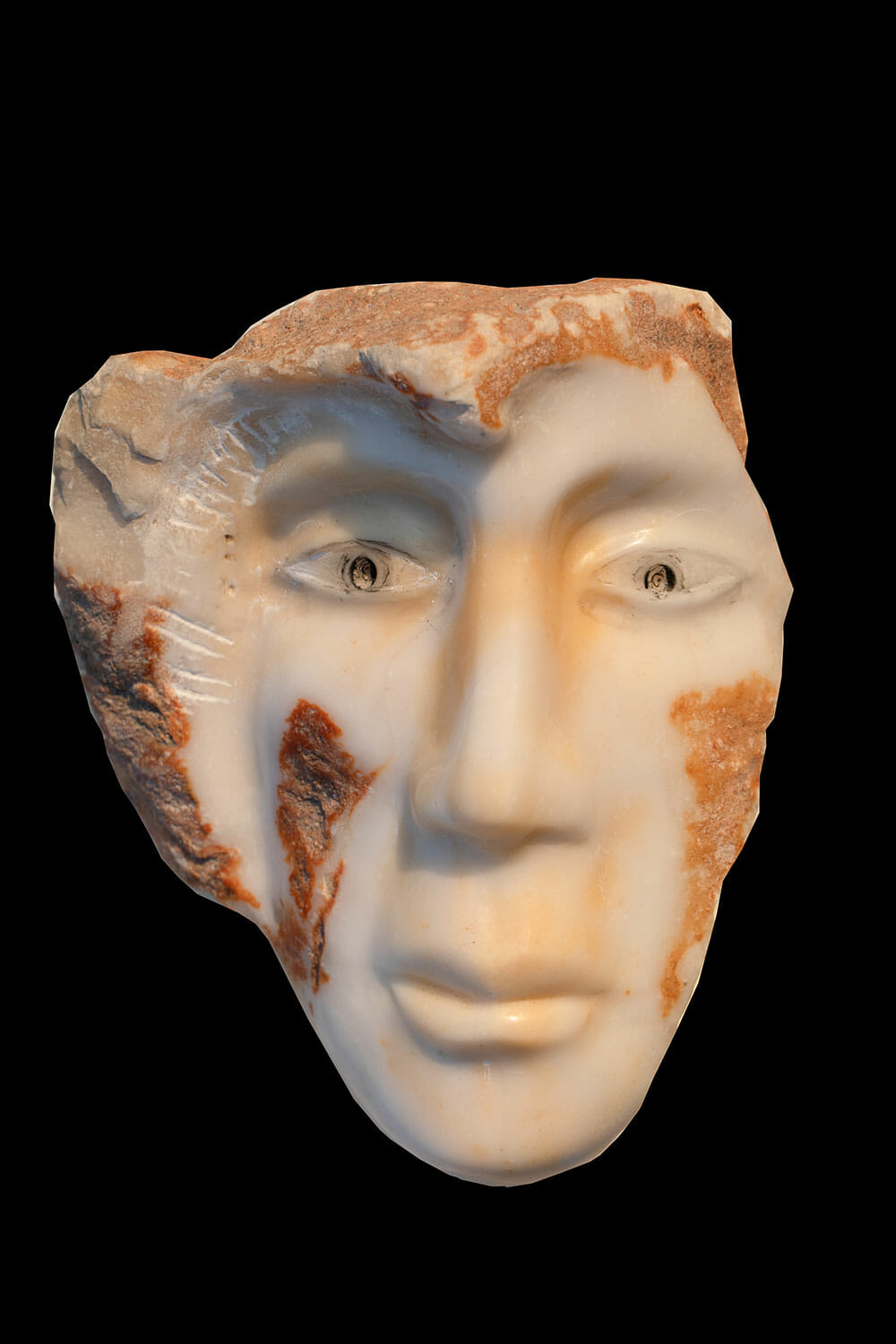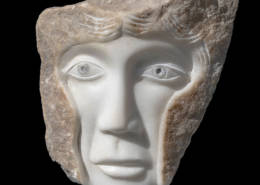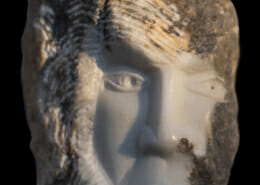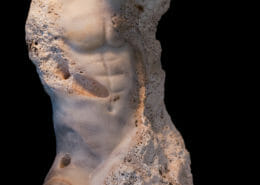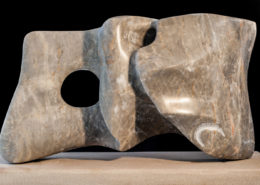Aliktypa Prosopa
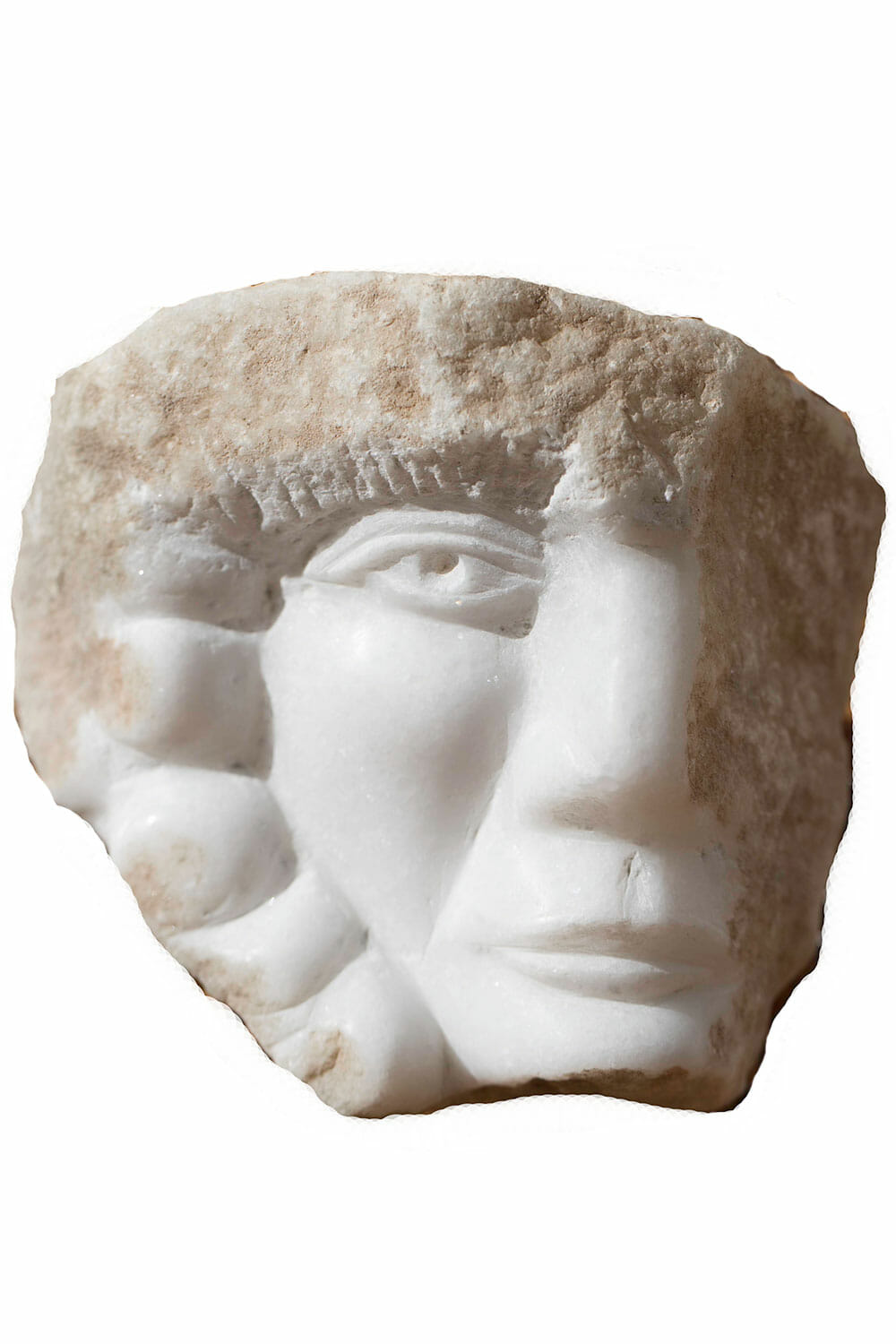
Il gran refiuto
The “Alexandrian Navigating” continues with new faces.
These, like the previous ones, sail into the secret channels of the poetry of K. Kavafis and are sculpted in slivers of the unique Parian Marble.
The Parian Lithos
Parian marble is the divine element, which came out of the heart of Parian land and gave birth to the most significant sculptures of the Greek antiquity. Cycladic idols, kouri and kores, Hermes of Praxiteles, the “Adolescent” of Critias, Nike of Samothraki, and Aphrodite of Milos are some of the masterpieces, which are made by Parian Marble, the unique for its lucidity, softness and transparency, “lychnitis”. Unfortunately, it has been more than seven centuries since this precious marble has been depleted. Still, many small pieces, latypes (slivers) are stored around the ancient quarries, as well as spread onto the neighboring hills.
For the last 35 years these pieces has been a challenge for me. The process of discovering them is by itself a voyage into history and aesthetics. When you approach them with the required respect and care they allow you to feel their strength, which is hidden inside them for centuries.
The Faces
Concerning the slivers of Parian marble, nature has granted them with the shape and the impression that each particular piece is a leftover from the “vertebra of a Zeus”. It has also granted them with the color, which centuries have put on their surface, this “old rust”. The dialogue with lychnitis is respectable and mild in the process of revealing its own face, in a way that the original shape and color of each piece is respected.
So, in my sculpture these pieces of Parian Marble do not stand as a mere element, which a sculptor uses to form a real or imaginary face. They rather stand in front of me as unique entities, as heterocities, able to cause such a dialogue with the artist, able to transform both into “prosopa”. This happens because a “prosopon” is first and above all, a traveling being. It is an “ego” who opens its sails, an “I” who travels to meet a “thou”.
In this process I use the three simple tools, which the ancient Greek sculptors used: the needlepoint chisel, the fork point and the flat. Additionally, not only the original shape and color are visible, but also in these sculptures, the viewer can detect even the stages of the process, because the zones between the absolute untouched and the perfectly worked are left detectable in purpose.
The names of the sculptures of this cycle, refer to persons from the poetry of the Alexandrian poet.
Aristides Varrias
